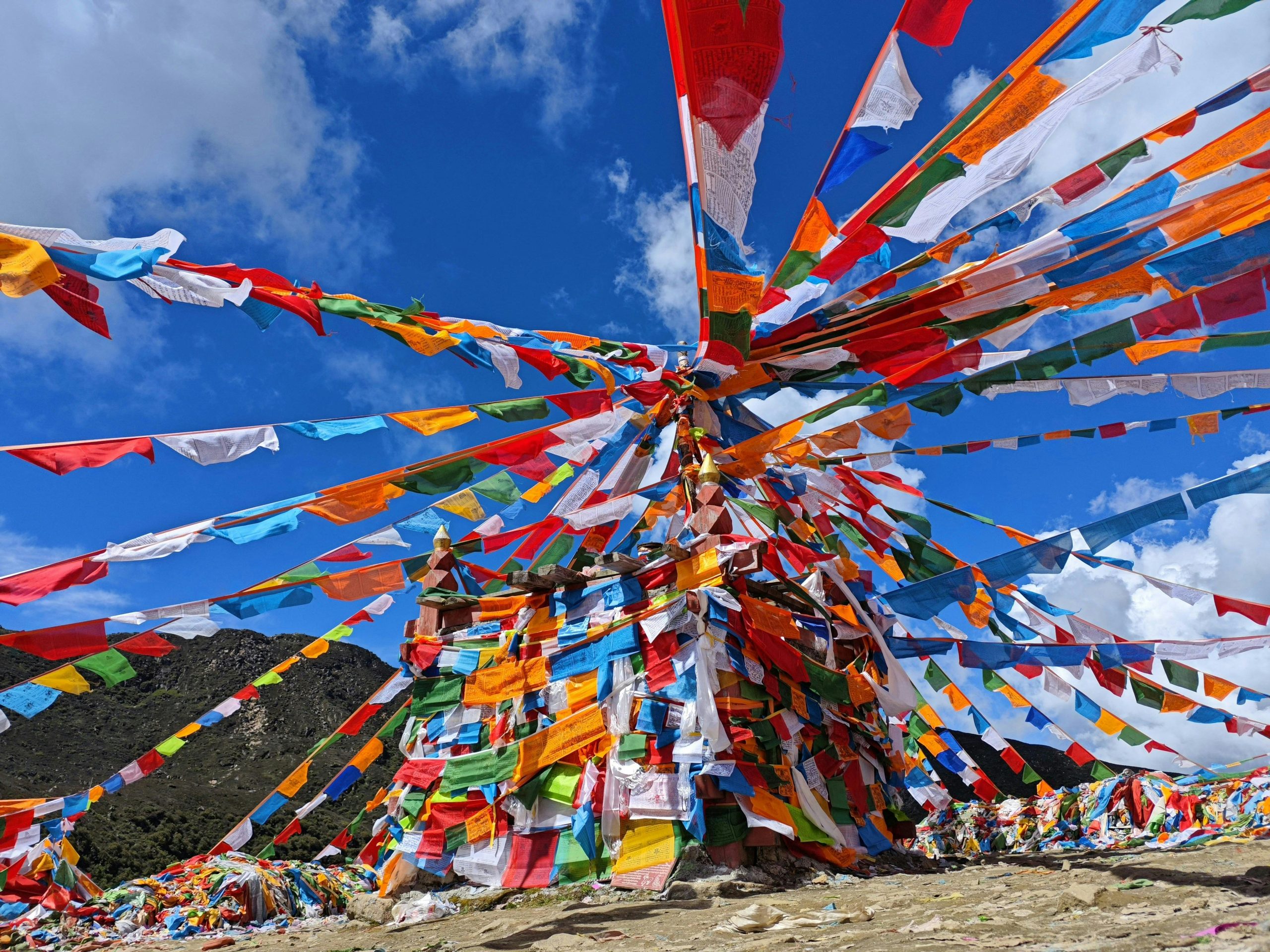Nepal prayer flags have long been an enduring symbol of spirituality, culture, and harmony with nature. These vibrant, sacred flags connect monks, practitioners, and communities across the Himalayan region. Understanding their history, symbolism, and purpose provides insight into why Nepal prayer flags remain a timeless tradition, fluttering from monasteries to mountaintops.
The Origins of Nepal Prayer Flags
Nepal prayer flags trace their origins to Tibetan Buddhism and the ancient Himalayan kingdoms. Monks first used them as tools to spread blessings, mantras, and prayers for peace, compassion, and wisdom. Traditionally, Nepal prayer flags are made of cotton, silk, or polyester, printed with sacred mantras and symbols. The five colors—blue, white, red, green, and yellow—represent the elements: sky, air, fire, water, and earth. Over centuries, these flags became an integral part of daily life and spiritual practice throughout Nepal and the surrounding regions.
The Spiritual Power of Mantras on Nepal Prayer Flags
Mantras inscribed on Nepal prayer flags are believed to carry divine energy. These sacred words, repeated countless times in prayer, are activated when the wind passes over the flags. The movement allows the mantras to disperse blessings to all beings. Monks and spiritual practitioners understand that Nepal prayer flags act as a continuous channel of positive energy, spreading harmony without requiring direct human involvement. The combination of wind and mantra creates a living, moving prayer that touches everyone nearby.
How Wind Enhances the Energy of Nepal Prayer Flags
Wind is essential to the function of Nepal prayer flags. The gentle fluttering caused by wind ensures that the prayers and symbols printed on the flags circulate freely in the environment. Unlike static objects, Nepal prayer flags rely on natural movement to fulfill their spiritual purpose. High-altitude winds carry these blessings across valleys and villages, connecting people and places in an invisible network of goodwill. Hanging Nepal prayer flags where wind is abundant maximizes their spiritual effect and ensures the continuous flow of positive energy.
Choosing the Perfect Location for Nepal Prayer Flags
The placement of Nepal prayer flags is crucial. They are traditionally hung in sacred spaces, mountain trails, rooftops, and temples where wind can flow unhindered. By elevating these flags above eye level, practitioners ensure that mantras are spread effectively. Many people also place Nepal prayer flags near meditation gardens, outdoor altars, or home entrances to invite serenity, protection, and spiritual focus. Proper placement reflects a balance between intention, aesthetics, and natural energy flow.
Symbolism Behind Colors and Designs
Colors on Nepal prayer flags are not merely decorative—they hold deep spiritual meaning. Blue symbolizes the sky and consciousness, white represents air and purity, red signifies fire and vitality, green represents water and growth, and yellow symbolizes earth and stability. In addition to colors, the flags often display sacred symbols such as the Wind Horse, Lotus, or Om. These icons, combined with mantras, amplify the spiritual message carried by Nepal prayer flags, linking humanity with the natural and divine realms.
The Role of Nepal Prayer Flags in Daily Life
Nepal prayer flags offer tangible and subtle benefits in daily life. Their presence encourages mindfulness, meditation, and compassion. The gentle flutter of the flags reminds individuals to stay present and connected to the world around them. Many people experience a sense of calm and spiritual protection when Nepal prayer flags are displayed in homes, workplaces, or outdoor spaces. By integrating these flags into daily life, practitioners honor a tradition that blends culture, spirituality, and environmental awareness.
Caring for and Renewing Nepal Prayer Flags
Over time, Nepal prayer flags naturally fade and fray, symbolizing impermanence and the continual release of prayers into the world. It is important to replace old flags with new ones to maintain the flow of blessings. When renewing Nepal prayer flags, practitioners often do so with intention and respect, ensuring that each new flag continues the sacred tradition. This ongoing practice reinforces spiritual mindfulness and the timeless nature of these symbolic banners.
Nepal Prayer Flags as Symbols of Global Peace
Beyond personal spiritual practice, Nepal prayer flags have become global symbols of peace, unity, and environmental consciousness. Communities worldwide adopt them to promote compassion, cross-cultural understanding, and connection with nature. Monks, travelers, and everyday practitioners recognize that these fluttering flags carry a message of hope and harmony. The combination of wind, mantras, and symbolism makes Nepal prayer flags an enduring emblem of collective goodwill.
Integrating Nepal Prayer Flags into Modern Spirituality
Today, Nepal prayer flags are used in contemporary spaces such as yoga studios, meditation centers, and homes to enhance spiritual awareness. Their movement in the wind provides a visual and energetic reminder to cultivate peace and mindfulness. By placing Nepal prayer flags where they can flutter freely, practitioners ensure that the prayers continue to spread blessings and positivity, connecting traditional Himalayan wisdom with modern spiritual practices.
Conclusion
From monks to mountains, Nepal prayer flags embody a timeless tradition of spirituality, intention, and harmony with nature. These sacred banners unite history, culture, and energy, spreading blessings wherever the wind carries them. Understanding the symbolism, placement, and significance of Nepal prayer flags allows anyone to participate in this ancient practice, inviting peace, mindfulness, and universal connection into daily life.











Leave a Reply